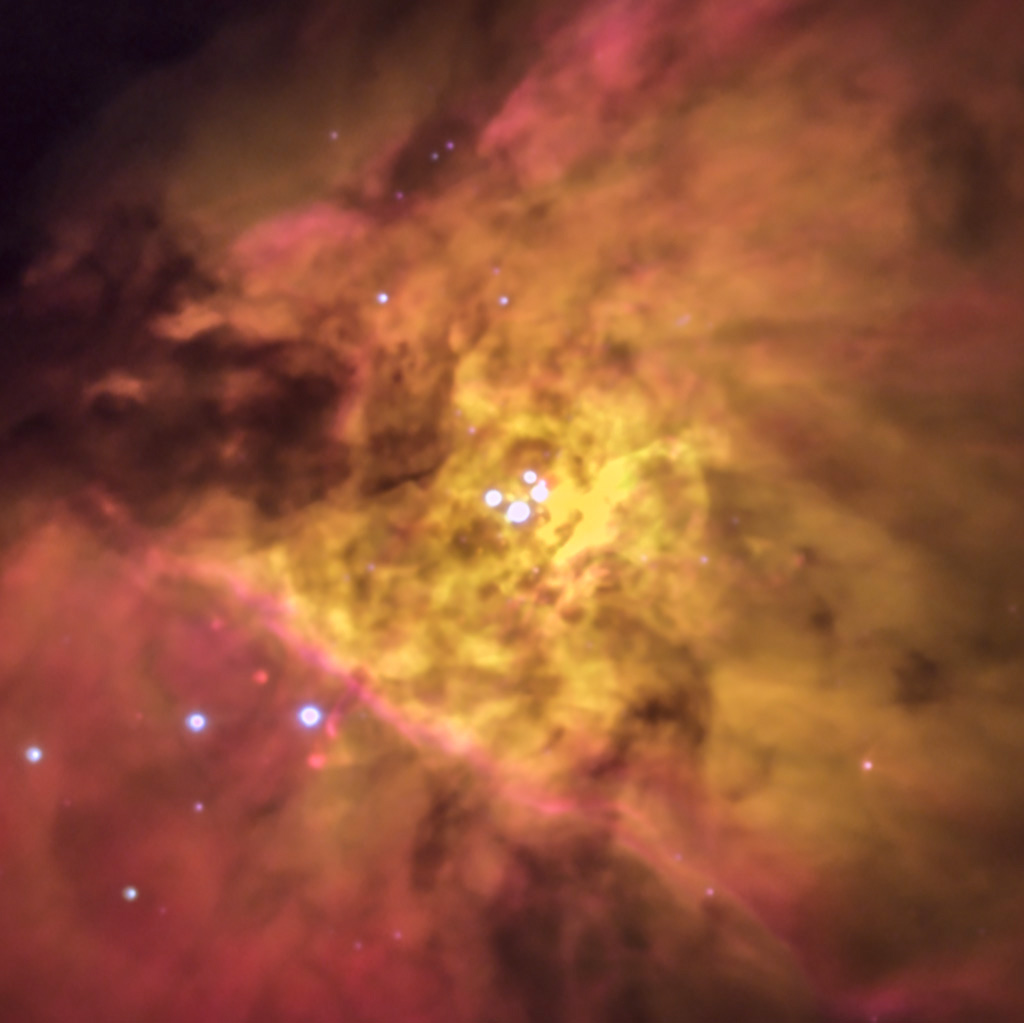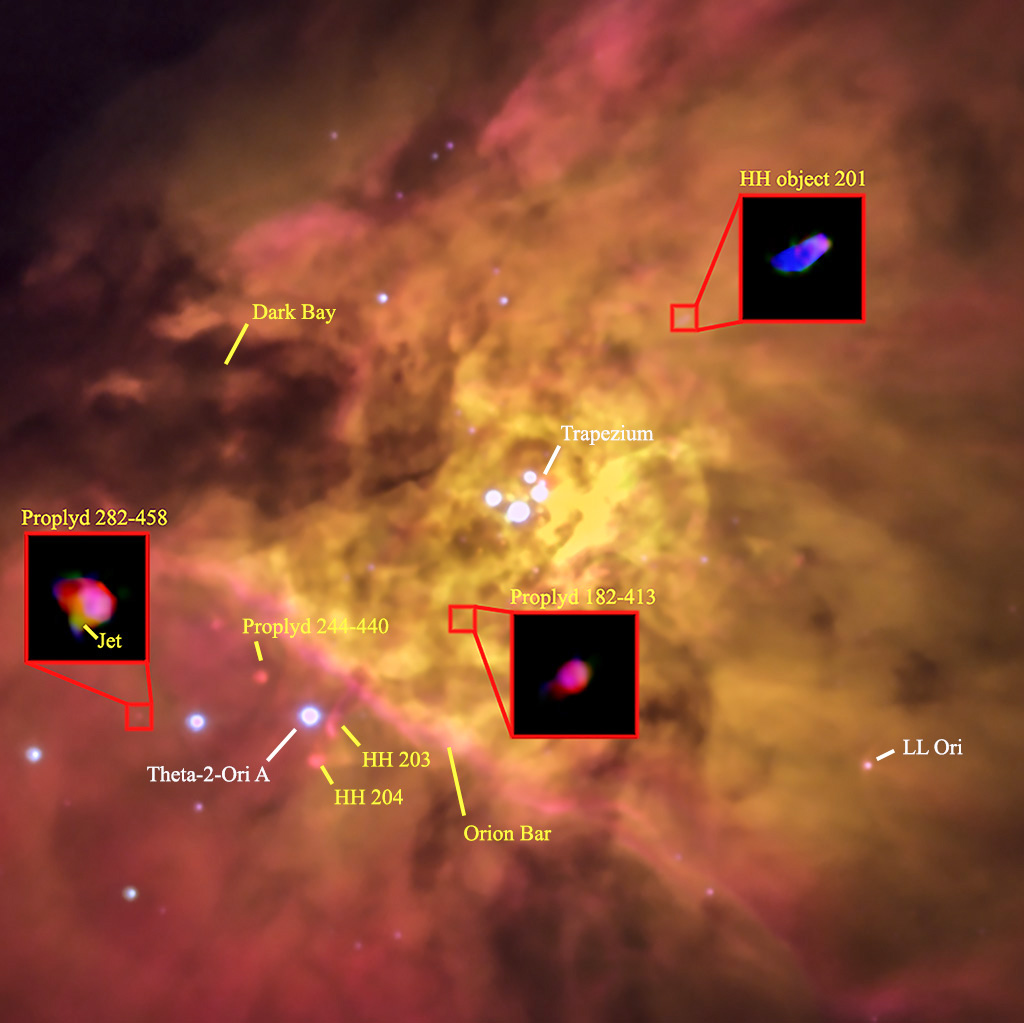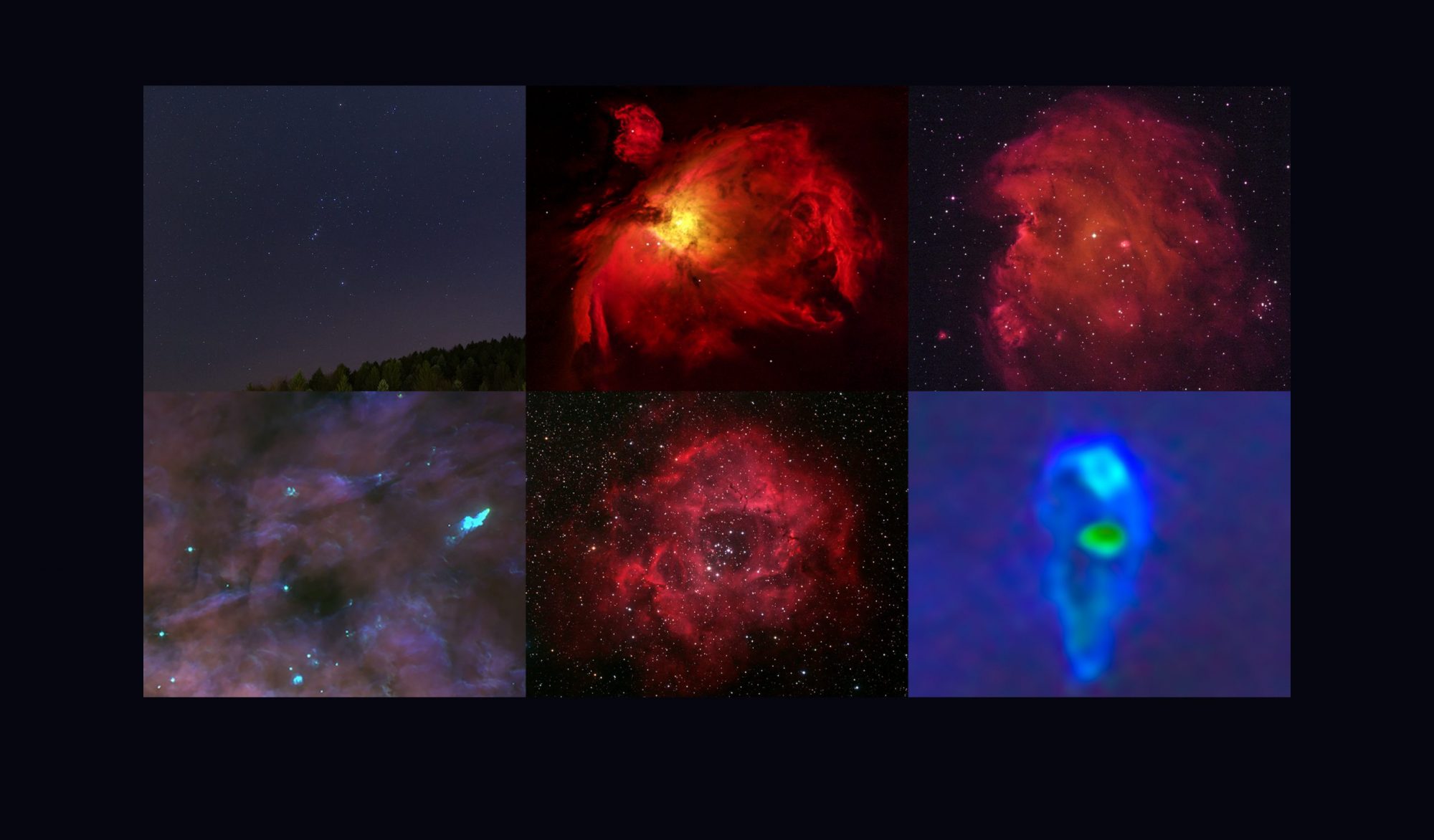

The Huygens region in Narrow-band observations (Planewave 17in CDK, FLI Proline 16803). High Dynamic Range, RGB picture of 278 stacked 10 second, 30 second and 60 second exposures in Halpha, OIII and SII Narrow-band filters. The total exposure time is two hours.
In the year 1659 the Dutch scientist Christiaan Huygens made the first detailed drawing of the central region of the Orion Nebula. This bright region with the Trapezium stars in the center and the Orion Bar to the south is today called the Huygens region.
The above color picture was made with three Narrow-band filters for the Halpha (red), OIII (green) and SII (blue) emission lines using a remote telescope (T32) from the iTelescope network in Siding Spring/Australia. Note, that i did not include the five minute exposures in this picture because the area close to the Trapezium stars is overexposed at longer exposure times. I did however use the five minute exposures for the inserted objects like the proplyd 182-413 to get a better signal.
Inside the diffuse background emission several small scale structures can be identified by using the color of the objects. The stars in the picture are bright in all three filters which gives them a white, in some cases a white/blue, color. Objects like proplyds or Herbig-Haro (HH) objects typically have a red color because they mainly emit light in the Halpha emission line. Close to the Trapezium the proplyds can also have a yellow color because the radiation from the O-type stars is here intense enough to excite the OIII and the Halpha line. A special case is the Herbig-Haro object 201 which has an intense blue color indicating strong SII emission.
Using the color and published proplyd catalogs it is possible to identify more than a dozen of the larger Orion proplyds in the picture. A typical example is the proplyd 182-413. This proplyd can be observed with the amateur instrument. Due to the limited spatial resolution (about 20-40 times smaller compared to the Hubble Space Telescope) it is however not possible to resolve the structure of the object.
Another interesting object is the proplyd 282-458. This proplyd shows a beautiful one-sided jet of hot gas in the pictures made with the Hubble Space Telescope. Interestingly this jet can be identified in the above picture made with an amateur instrument!
A peculiar object is the Herbig-Haro object 201. This blue, finger like structure is pointing away from the area with the Becklin-Neugebauer (BN) Object. The finger consists of hot gas which was ejected in an energetic event about 500 years ago and moves with supersonic speed through the ambient medium. This results in the strong, blue SII emission.
